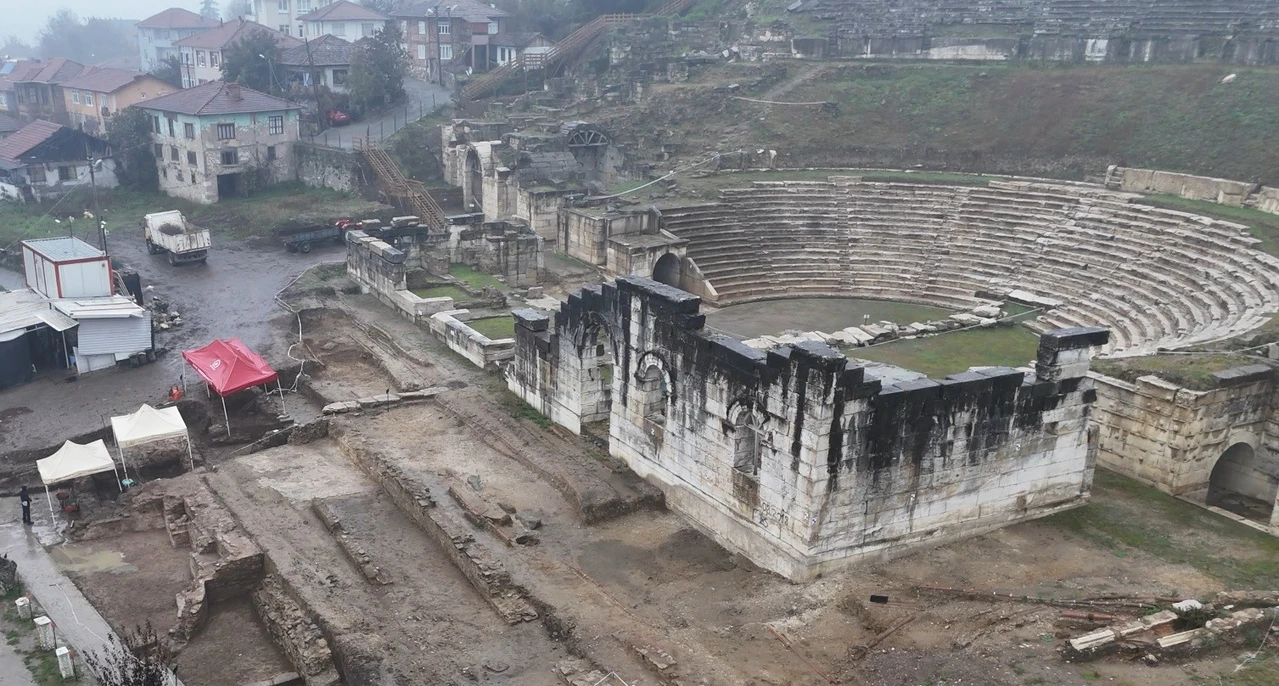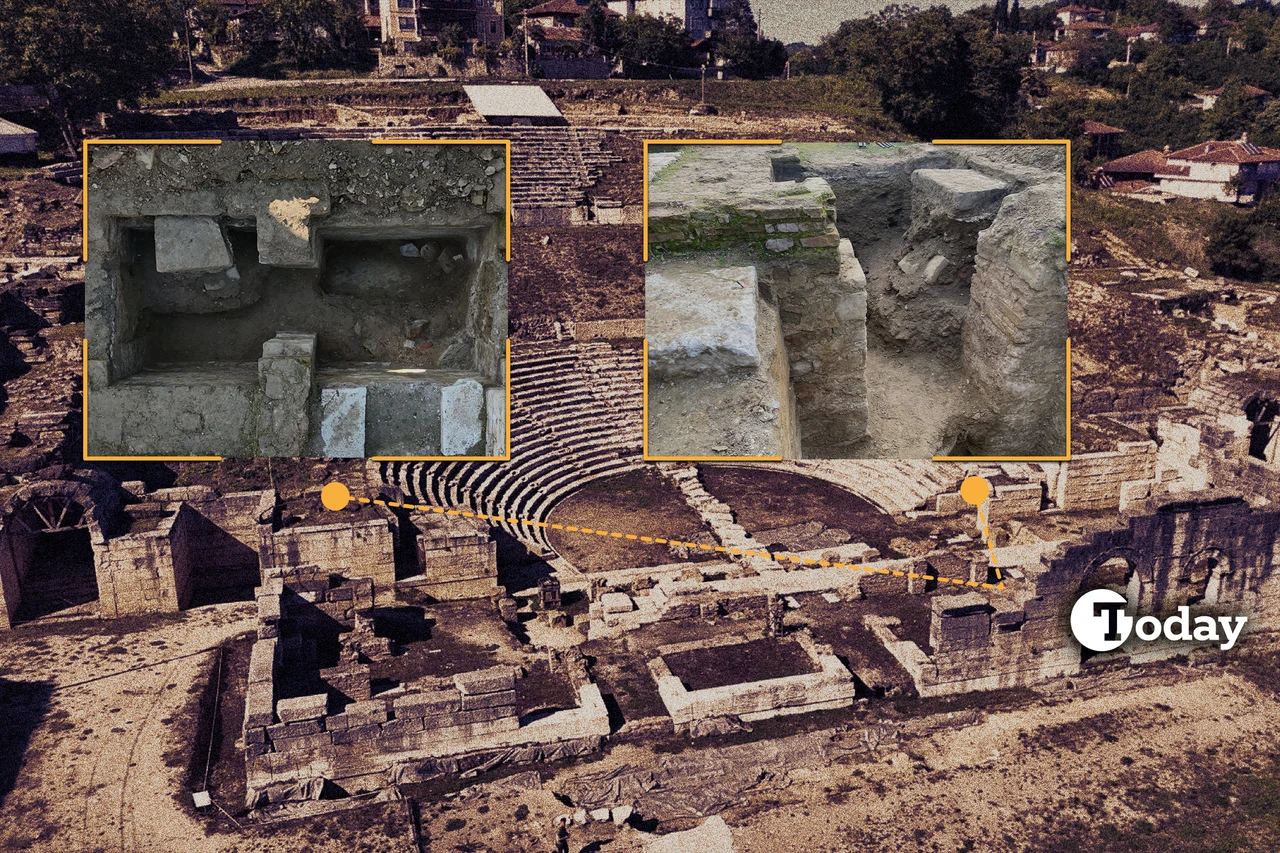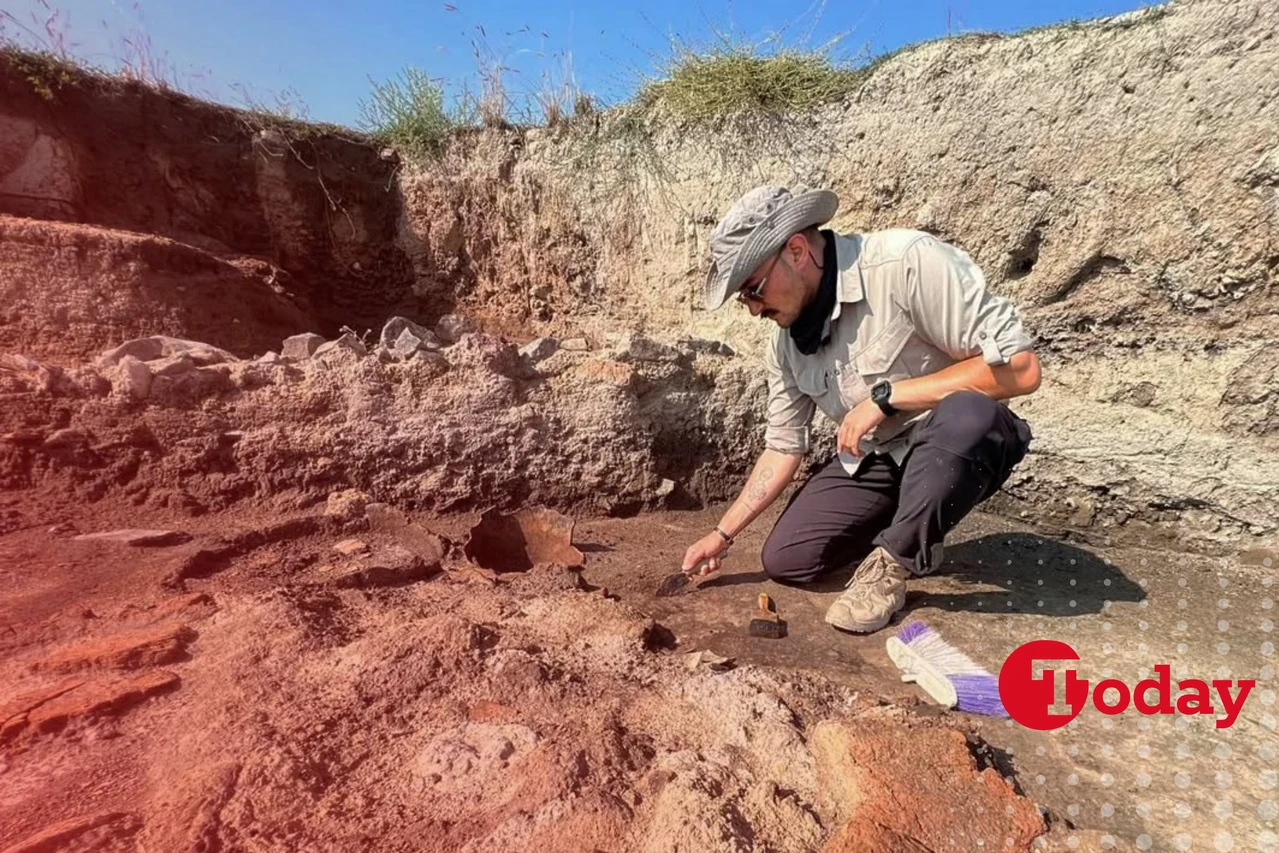Mysteries unveiled at Türkiye’s Prusias ad Hypium: Ancient statues, hidden tunnels
 Aerial view of the Roman-era theater in the ancient city of Prusias ad Hypium, Duzce, Türkiye, 2024. (Photo via Koray Erdogan/Türkiye Today)
Aerial view of the Roman-era theater in the ancient city of Prusias ad Hypium, Duzce, Türkiye, 2024. (Photo via Koray Erdogan/Türkiye Today)
Ongoing excavations at Prusias ad Hypium, located between Istanbul and Ankara, continue to uncover remarkable discoveries, offering insights into the ancient past.
Situated 8 km north of Duzce, the ancient city of Prusias ad Hypium lies within the borders of Konuralp Ciftepinarlar. During the Roman era, the city was a significant part of the Bithynia region, stretching from Kalkhedon (modern Kadikoy) to Claudiopolis (modern Bolu). Nestled on a hill overlooking the southern plain and surrounded by mountains, Prusias ad Hypium was one of the 12 cities that formed the Bithynian League.
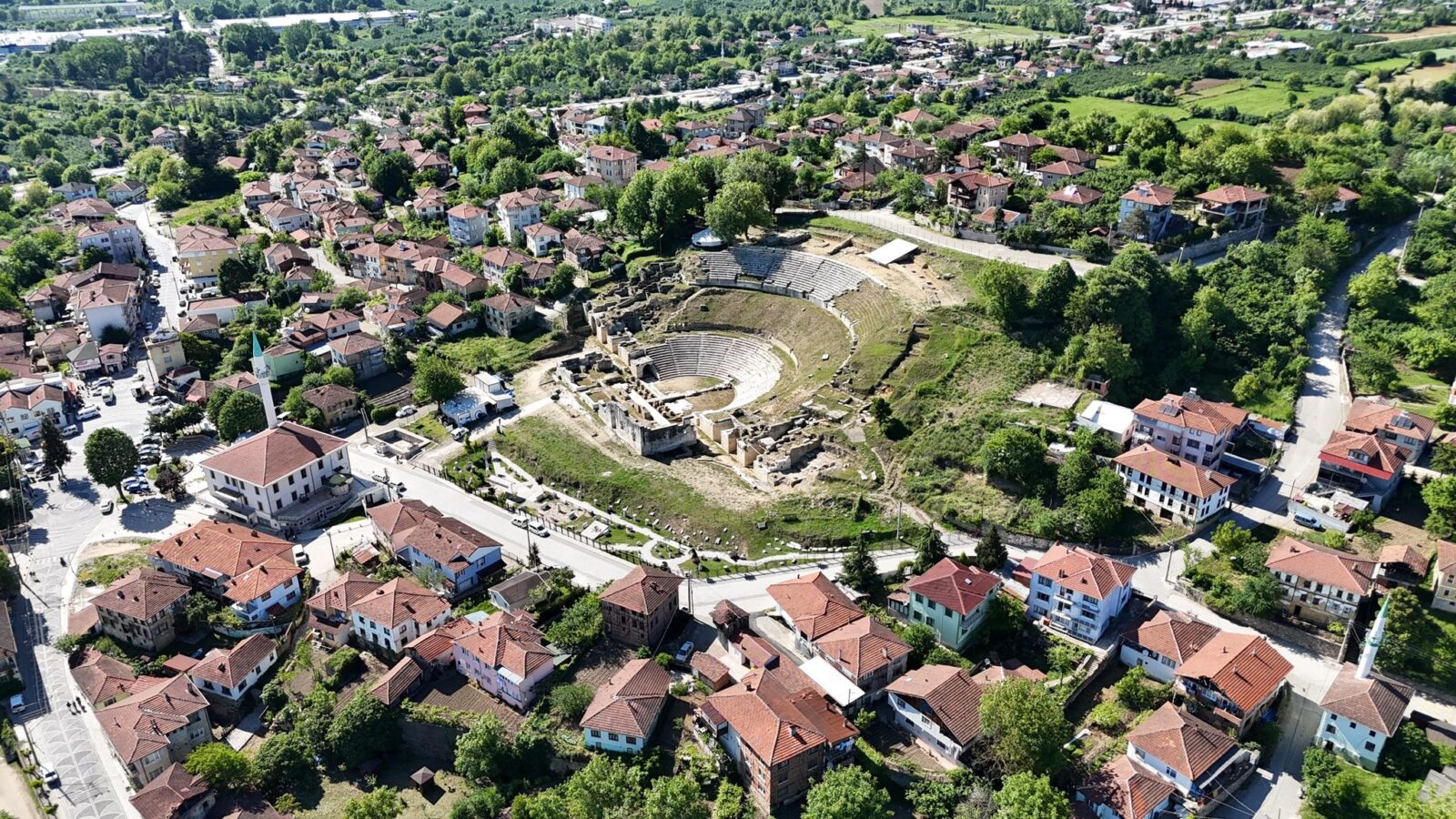
From the Bithynian Kingdom to the Ottoman Empire
Originally under the control of Heraclea Pontica (modern Karadeniz Eregli), the city was incorporated into the Bithynian Kingdom by King Prusias I in 182 BC, along with Tios. Prusias ad Hypium, meaning “Prusias by the Hypios” (present-day Melen River), was one of three cities in Bithynia named after the king.
The city experienced continuous habitation until it was integrated into Ottoman lands in 1323 by Konuralp Gazi, a frontier lord under Osman Bey. During the Ottoman period, it was known as Uskubu, later renamed Konuralp.
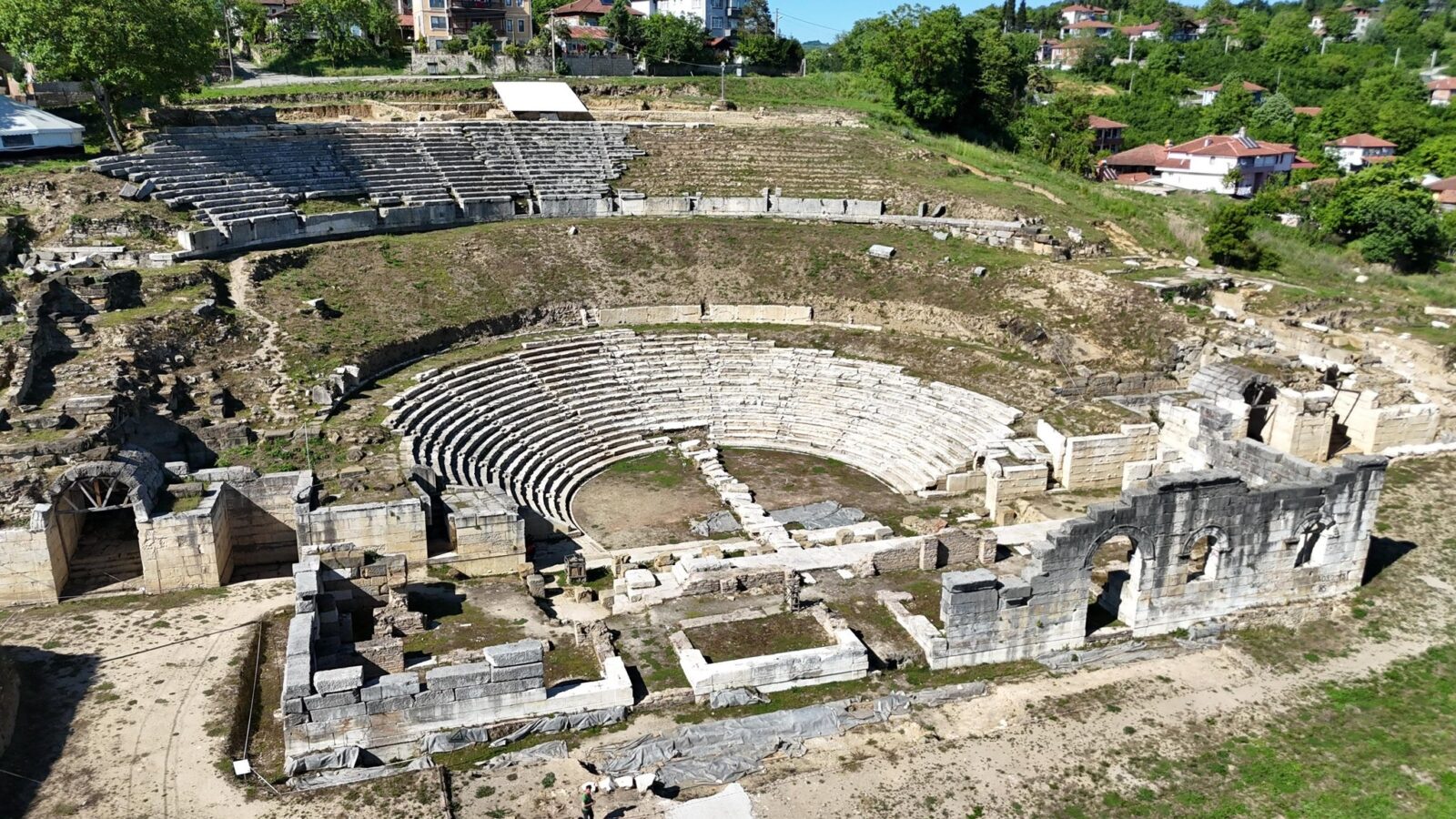
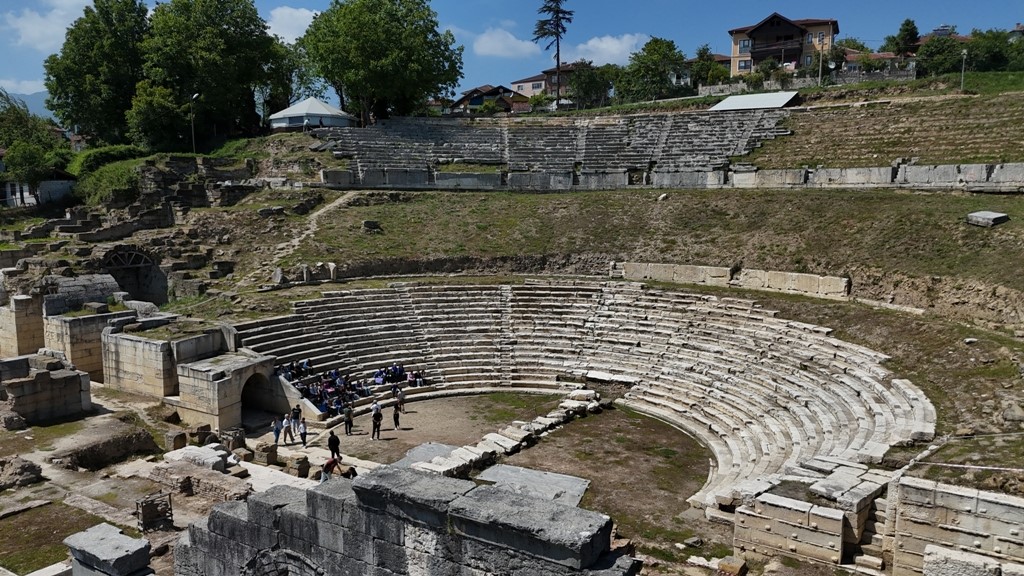
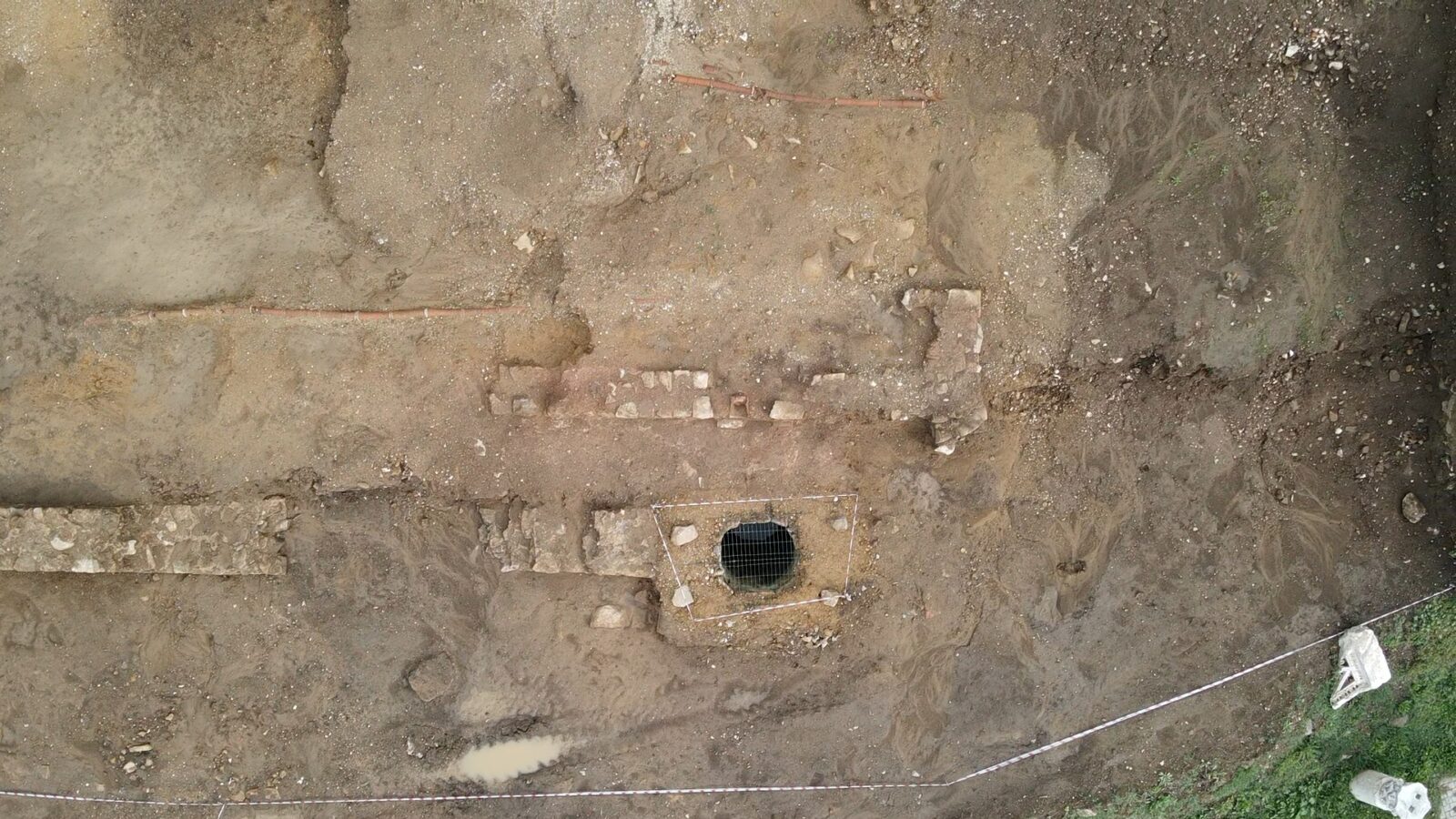
Excavations unveil well-preserved Roman theater
The ancient theater, known locally as “Kirk Basamaklar” or “Forty Steps,” is one of the best-preserved theaters not only in Bithynia but also across Anatolia. While its stones were repurposed for other buildings over the centuries, the theater’s ima (lower seating), summa cavea (upper seating), and stage building have largely survived.
The first scientific excavations began in 2013 under the leadership of the Konuralp Museum and Duzce University’s Archaeology Department. Initial excavations revealed the media cavea vomitorium (corridors) in the east and west sections, and from 2017 to 2024, extensive work was carried out on the western section of the theater, uncovering much of the ima cavea and stage building.
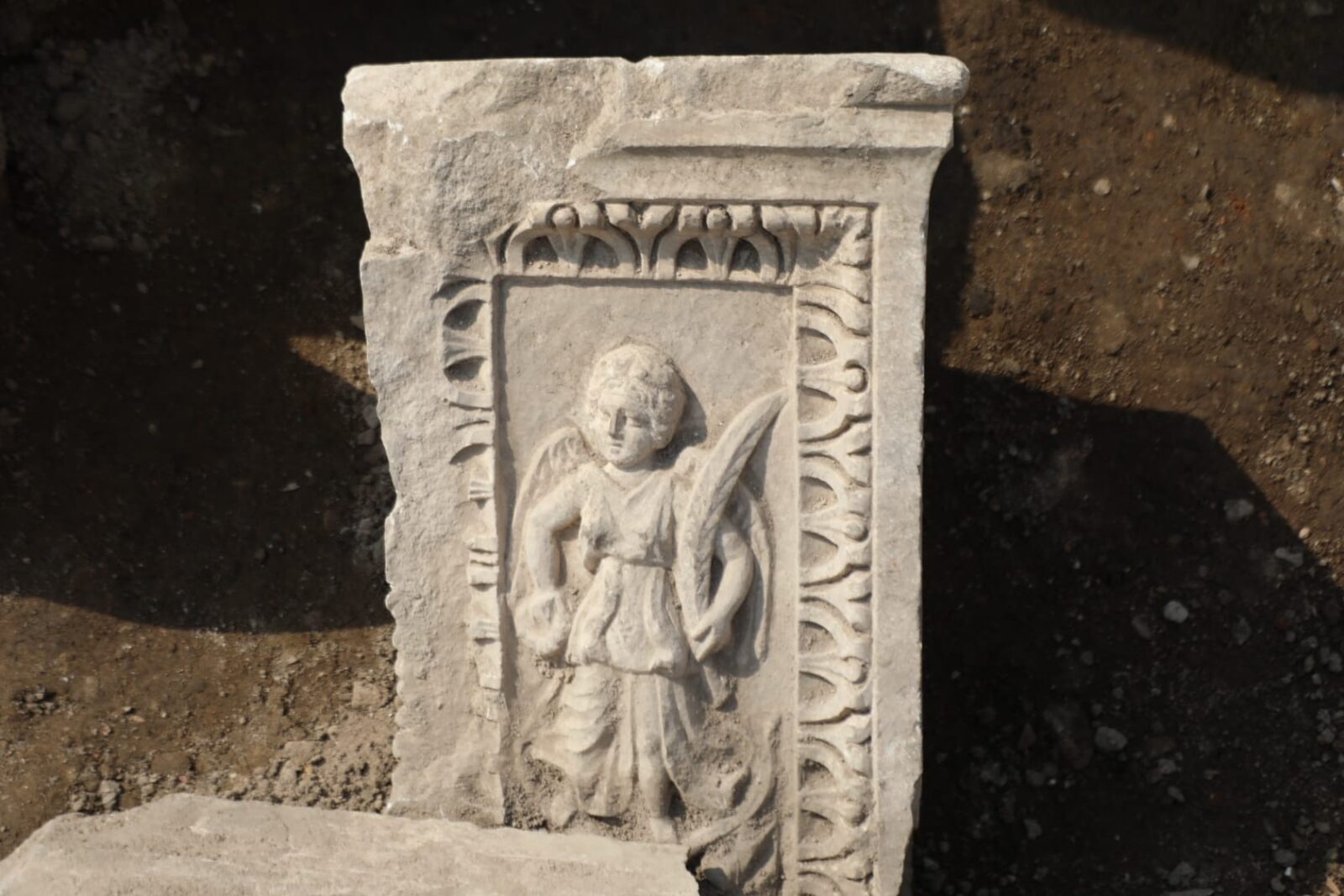
Batı Karadeniz’in Efes’i olarak adlandırılan Prusias ad Hypium Antik Kenti’nde yapılan kazı çalışmalarında Apollo heykeli çıktı. Apollo heykelini inceleyen Düzce Belediye Başkanı Dr. Faruk Özlü “Apollo heykeli ile büyük bir uygarlığın mirasını taşıdığımızı anlıyoruz” dedi.
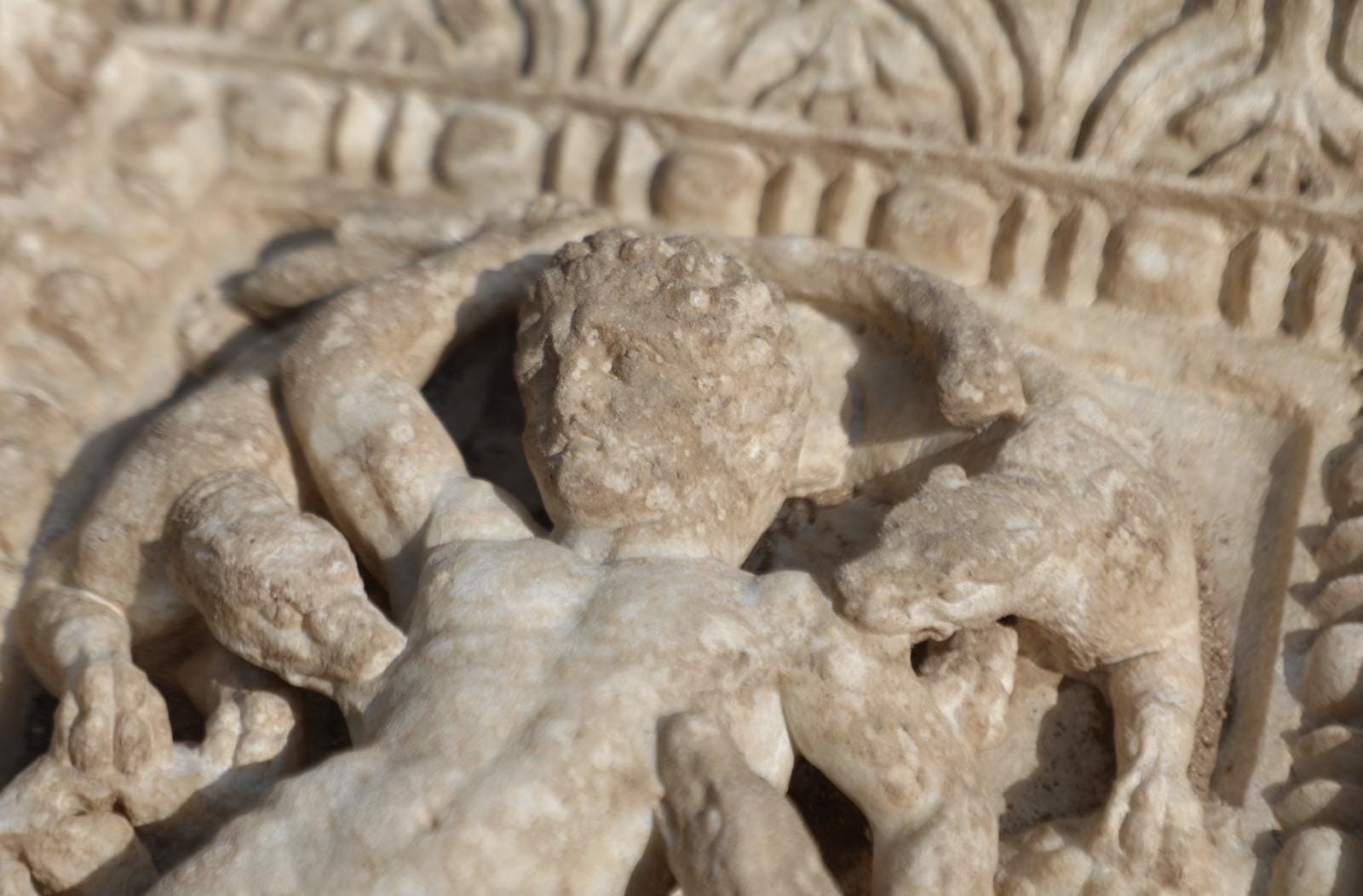
Batı Karadeniz’in Efes’i olarak adlandırılan Prusias ad Hypium Antik Kenti’nde yapılan kazı çalışmalarında Apollo heykeli çıktı. Apollo heykelini inceleyen Düzce Belediye Başkanı Dr. Faruk Özlü “Apollo heykeli ile büyük bir uygarlığın mirasını taşıdığımızı anlıyoruz” dedi.
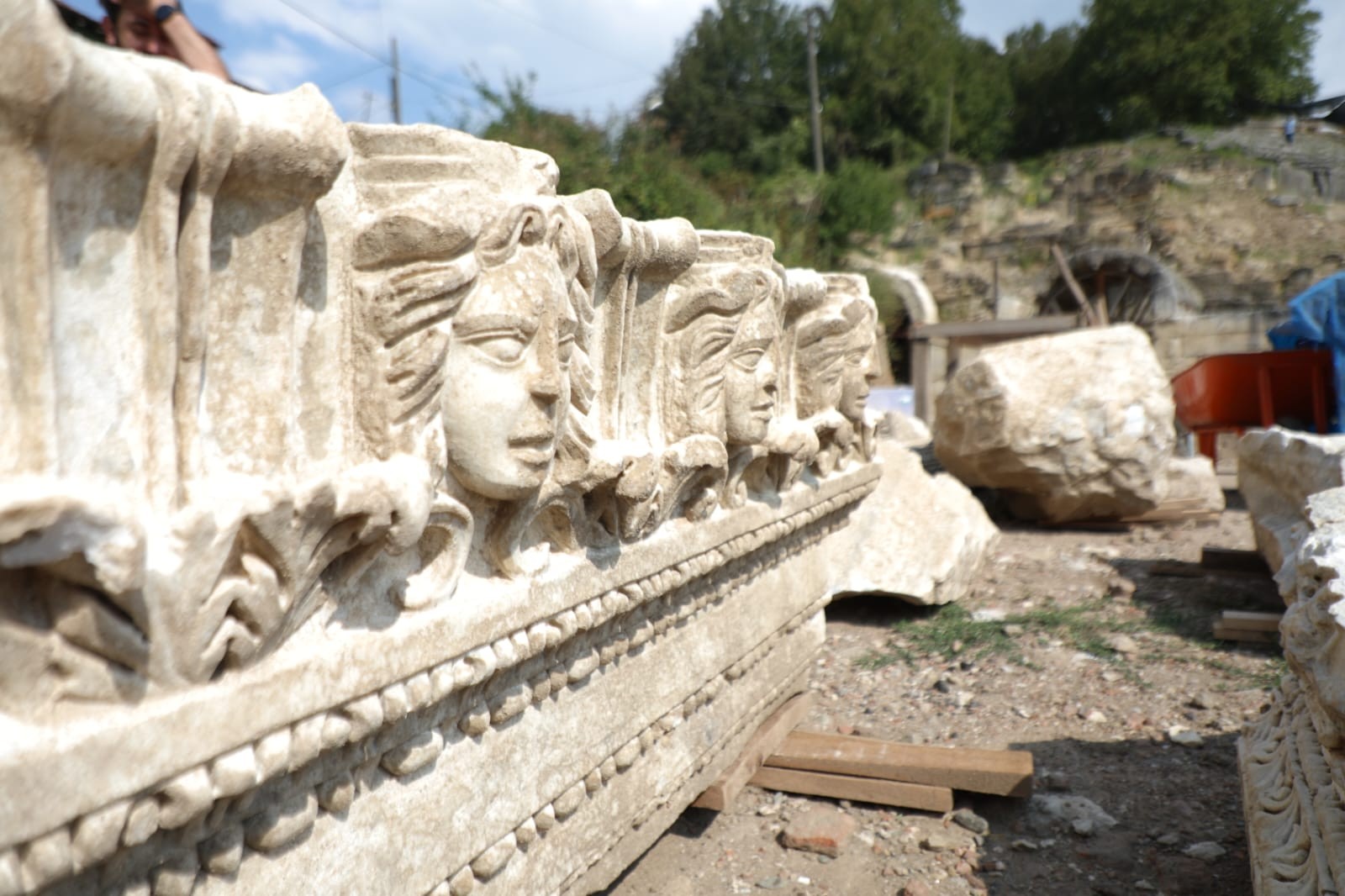
Batı Karadeniz’in Efes’i olarak adlandırılan Prusias ad Hypium Antik Kenti’nde yapılan kazı çalışmalarında Apollo heykeli çıktı. Apollo heykelini inceleyen Düzce Belediye Başkanı Dr. Faruk Özlü “Apollo heykeli ile büyük bir uygarlığın mirasını taşıdığımızı anlıyoruz” dedi.
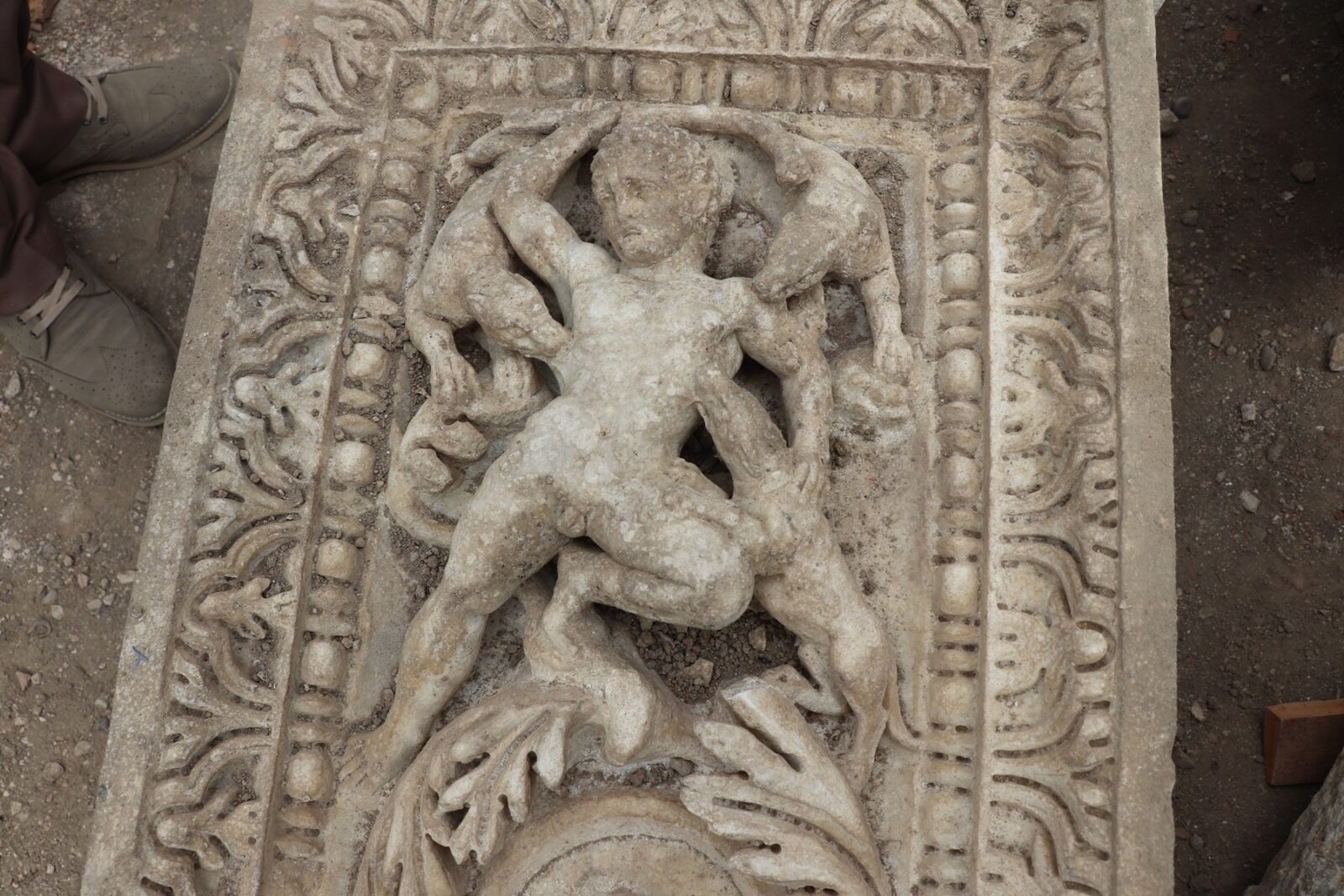
Düzce’nin Prusias ad Hypium Antik Kentinde yapılan kazı çalışmalarında Roma dönemine ait olduğu düşünülen sahne binası bölümünde işlemeli mermer bloklar ve mimari figürler çıkarıldı.
Treasures from beneath: Statues, drainage systems, and more
Over the past five years, ongoing excavations have unearthed a wealth of artifacts, including statues, storage containers, architectural blocks, and tunnels.

Among the significant finds is a well-preserved drainage system dating back to the Eastern Roman (Byzantine) period, discovered in 2022.
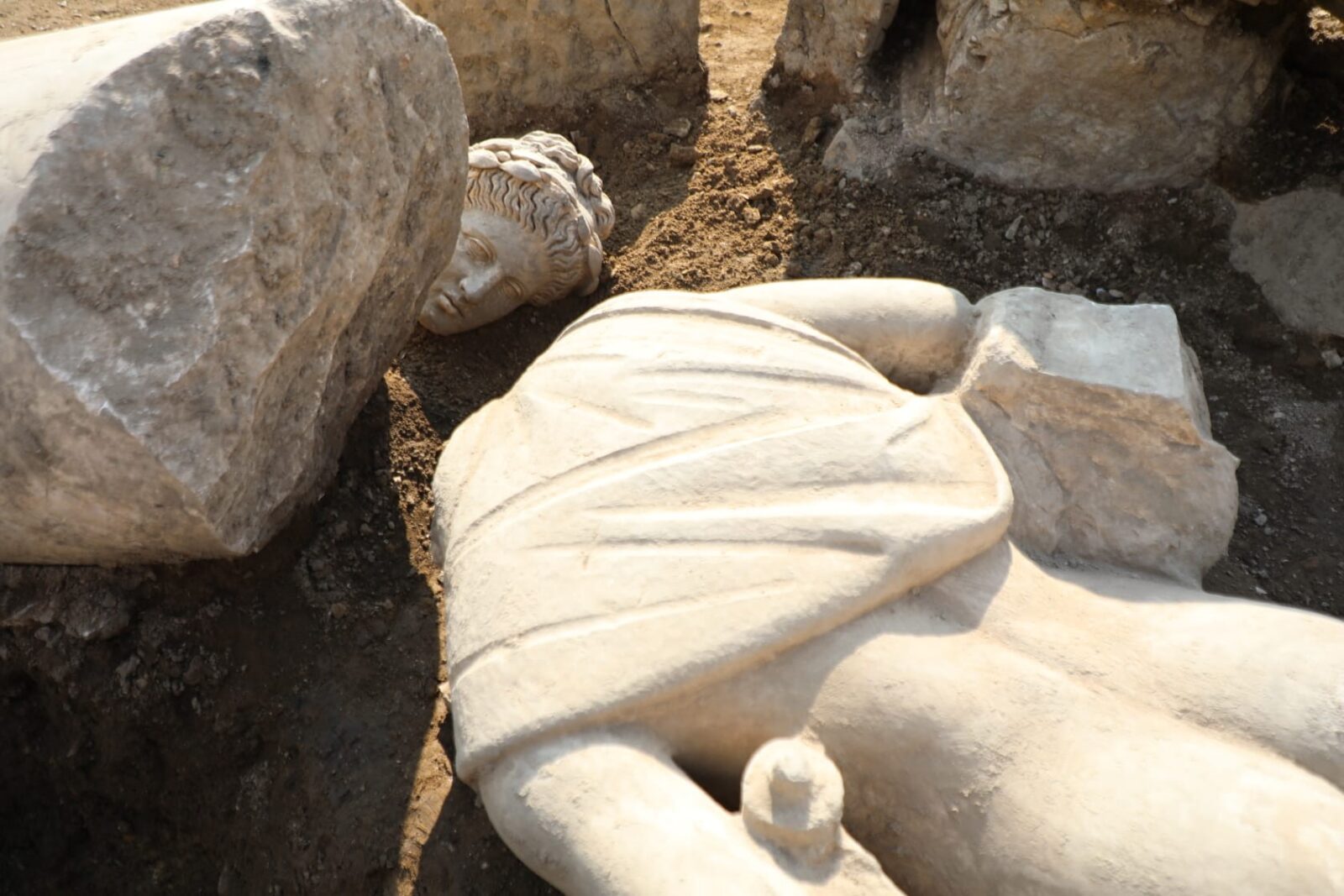
Batı Karadeniz’in Efes’i olarak adlandırılan Prusias ad Hypium Antik Kenti’nde yapılan kazı çalışmalarında Apollo heykeli çıktı. Apollo heykelini inceleyen Düzce Belediye Başkanı Dr. Faruk Özlü “Apollo heykeli ile büyük bir uygarlığın mirasını taşıdığımızı anlıyoruz” dedi.
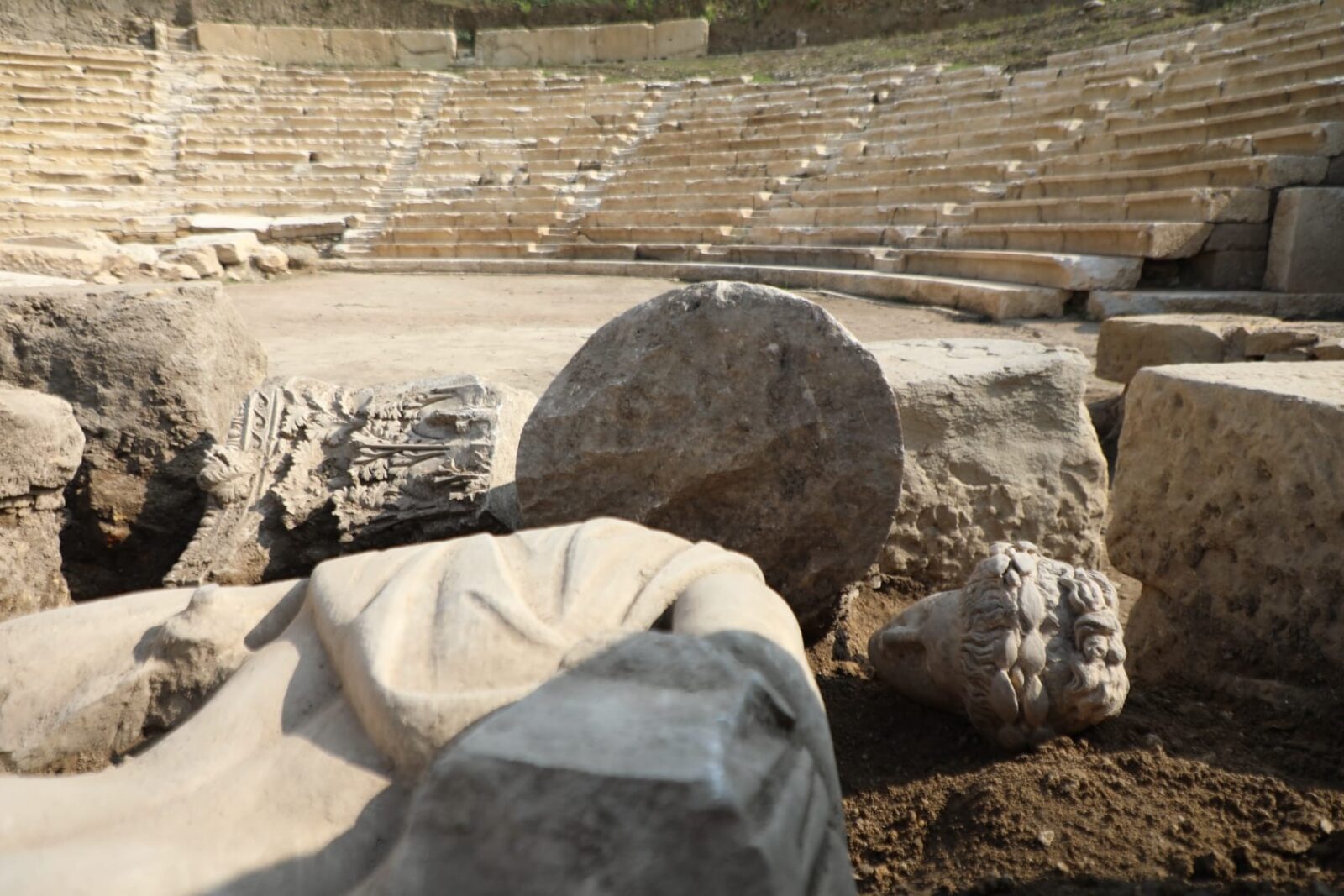
Batı Karadeniz’in Efes’i olarak adlandırılan Prusias ad Hypium Antik Kenti’nde yapılan kazı çalışmalarında Apollo heykeli çıktı. Apollo heykelini inceleyen Düzce Belediye Başkanı Dr. Faruk Özlü “Apollo heykeli ile büyük bir uygarlığın mirasını taşıdığımızı anlıyoruz” dedi.

Batı Karadeniz’in Efes’i olarak adlandırılan Prusias ad Hypium Antik Kenti’nde yapılan kazı çalışmalarında Apollo heykeli çıktı. Apollo heykelini inceleyen Düzce Belediye Başkanı Dr. Faruk Özlü “Apollo heykeli ile büyük bir uygarlığın mirasını taşıdığımızı anlıyoruz” dedi.
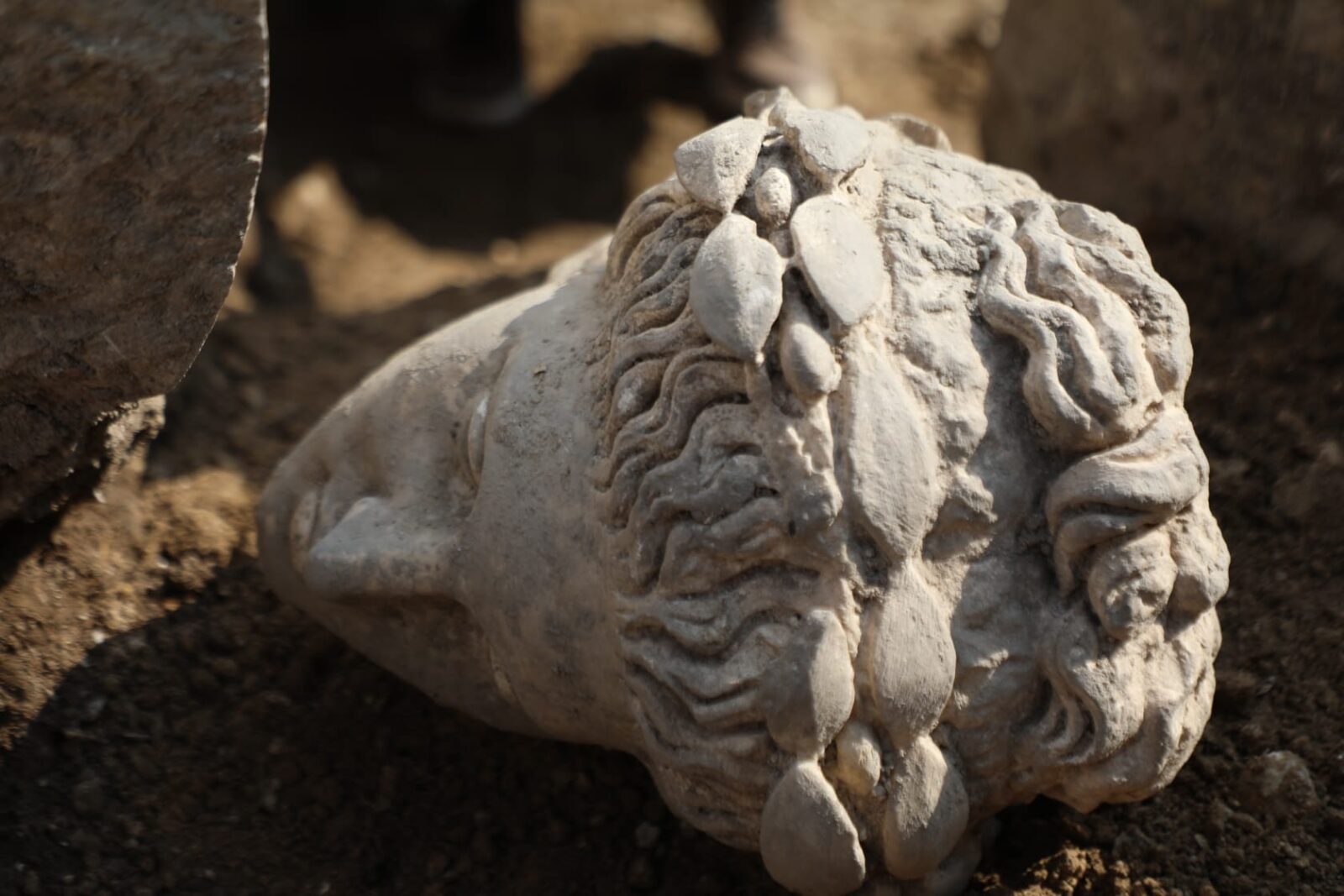
Batı Karadeniz’in Efes’i olarak adlandırılan Prusias ad Hypium Antik Kenti’nde yapılan kazı çalışmalarında Apollo heykeli çıktı. Apollo heykelini inceleyen Düzce Belediye Başkanı Dr. Faruk Özlü “Apollo heykeli ile büyük bir uygarlığın mirasını taşıdığımızı anlıyoruz” dedi.
In addition, numerous statues were uncovered, including a near-complete statue of Apollo holding a kithara, suggesting the presence of musical performances at the theater.
The Apollo statue, which measures 1.9 meters tall, is adorned with a laurel crown, while its finely sculpted features reflect the artistic craftsmanship of the 2nd century A.D.
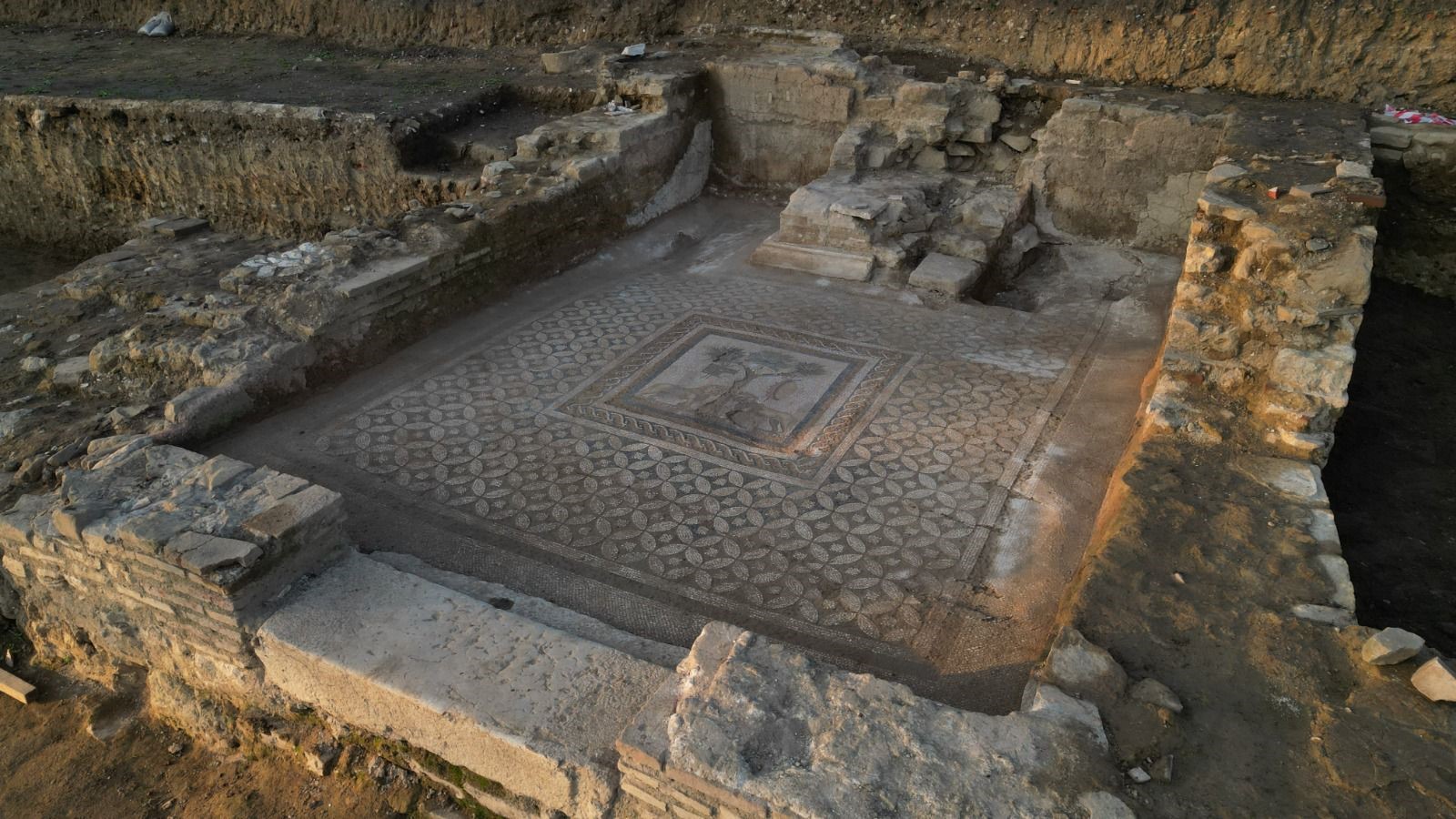
Düzce Belediyesi’nin destekleri ile 4 yıldır aralıksız kazıların devam ettiği Konuralp Antik Kentte tarihe ışık tutacak keşifler elde edilmeye devam ediyor. Kazılarda Dionysos Kült Mekanını yansıtan yapı ortaya çıkarıldı.

Düzce Belediyesi’nin destekleri ile 4 yıldır aralıksız kazıların devam ettiği Konuralp Antik Kentte tarihe ışık tutacak keşifler elde edilmeye devam ediyor. Kazılarda Dionysos Kült Mekanını yansıtan yapı ortaya çıkarıldı.
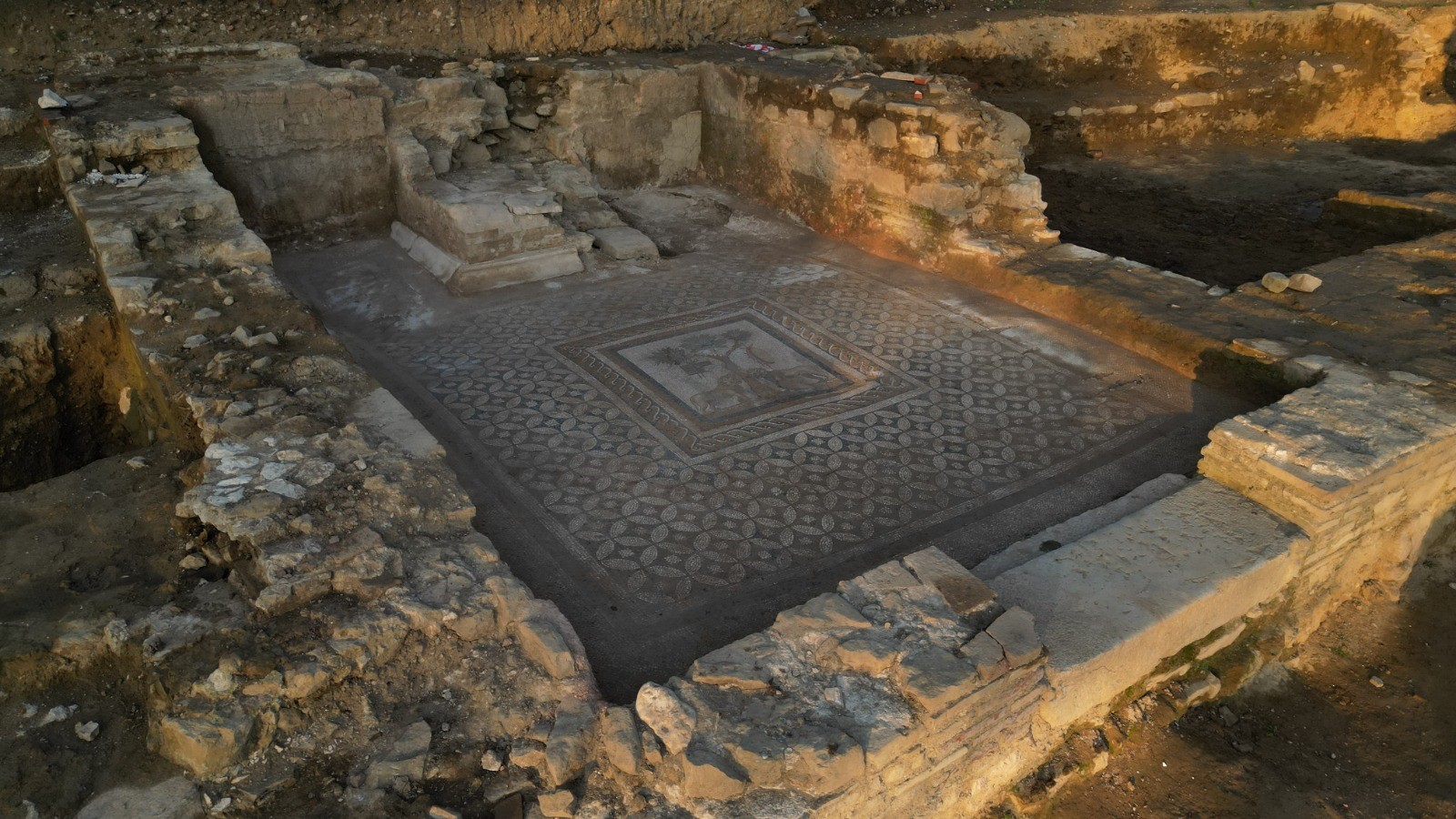
Düzce Belediyesi’nin destekleri ile 4 yıldır aralıksız kazıların devam ettiği Konuralp Antik Kentte tarihe ışık tutacak keşifler elde edilmeye devam ediyor. Kazılarda Dionysos Kült Mekanını yansıtan yapı ortaya çıkarıldı.
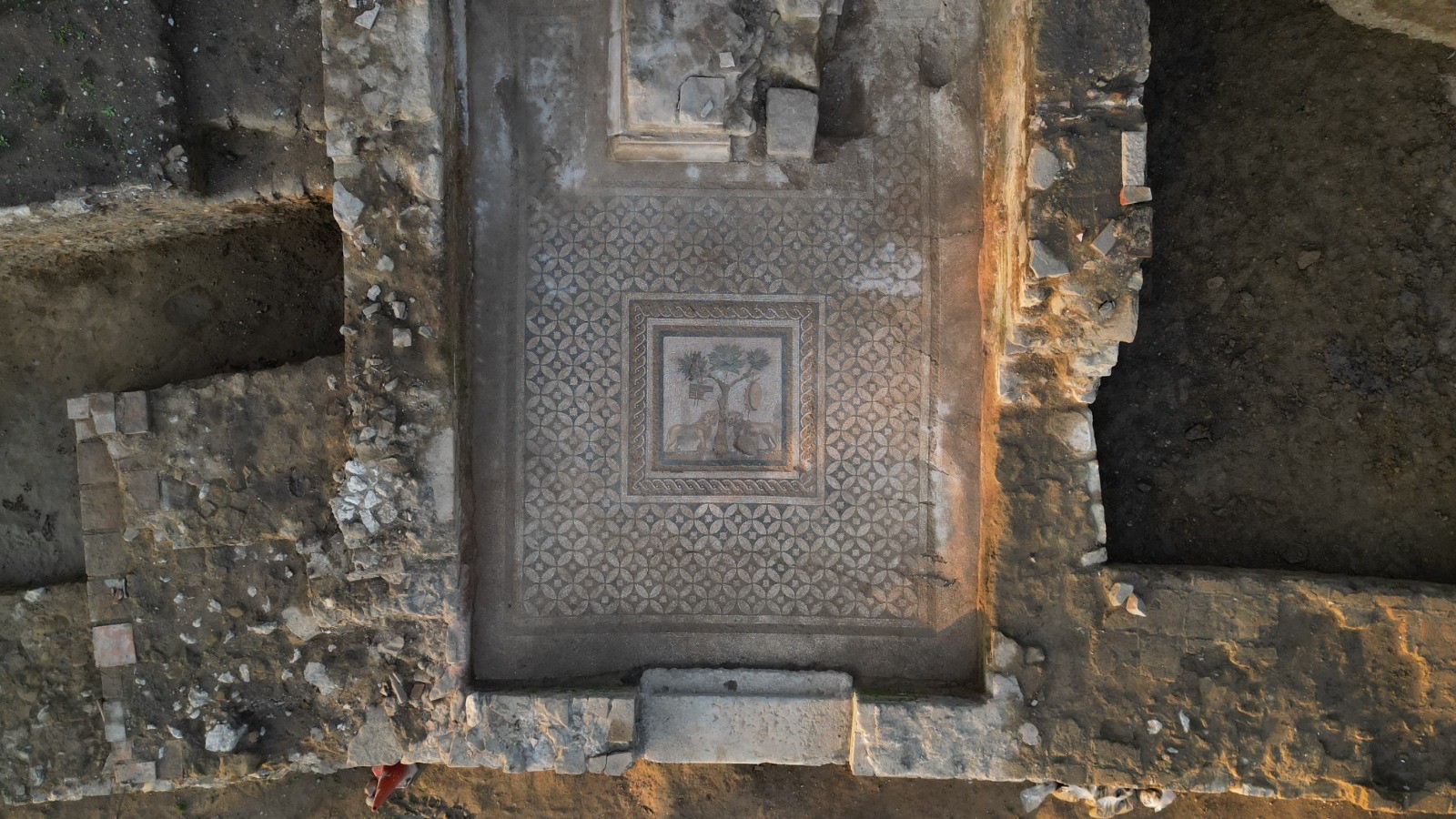
Düzce Belediyesi’nin destekleri ile 4 yıldır aralıksız kazıların devam ettiği Konuralp Antik Kentte tarihe ışık tutacak keşifler elde edilmeye devam ediyor. Kazılarda Dionysos Kült Mekanını yansıtan yapı ortaya çıkarıldı.
Stunning discovery: Dionysian cult room unearthed at Prusias ad Hypium
During the 2023 excavations, a room believed to be dedicated to the Dionysian cult was discovered within the theater’s upper section. This room, adorned with intricate mosaics of white, blue, yellow, green, and brown tesserae, features geometric patterns and a central scene depicting two lions facing a pine tree with musical instruments hanging from its branches.
The discovery has confirmed the existence of a Dionysian cult within the ancient city, marking it as a significant cultural center in its time.
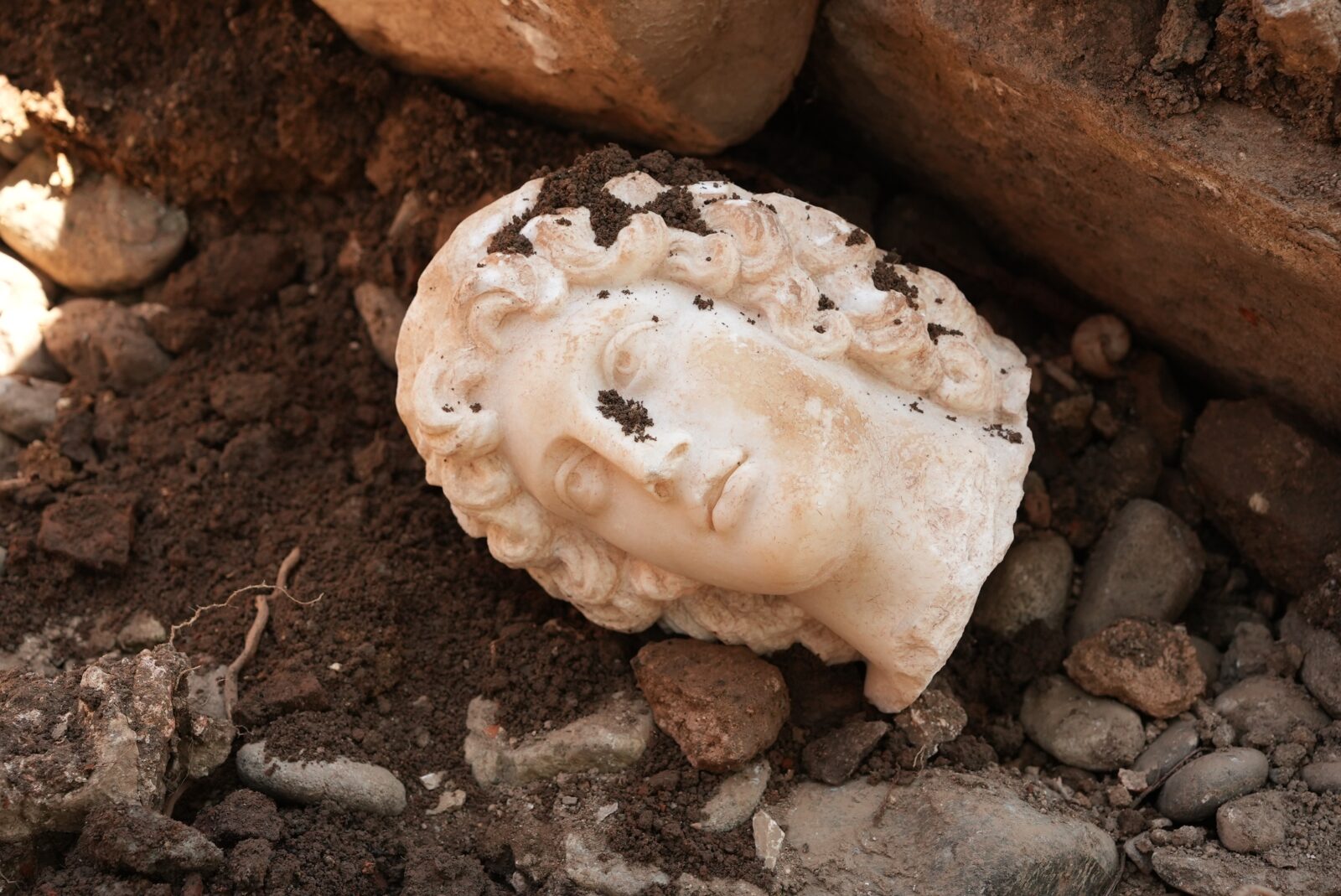
Arkeoloji uzmanlarının belirlediği Türkiye’nin öne çıkan 10 arkeolojik keşfi listesinde Düzce’de kazı çalışmalarında ortaya çıkan Büyük İskender Portresi’nin beşinci sırada yer aldığı bildirildi.
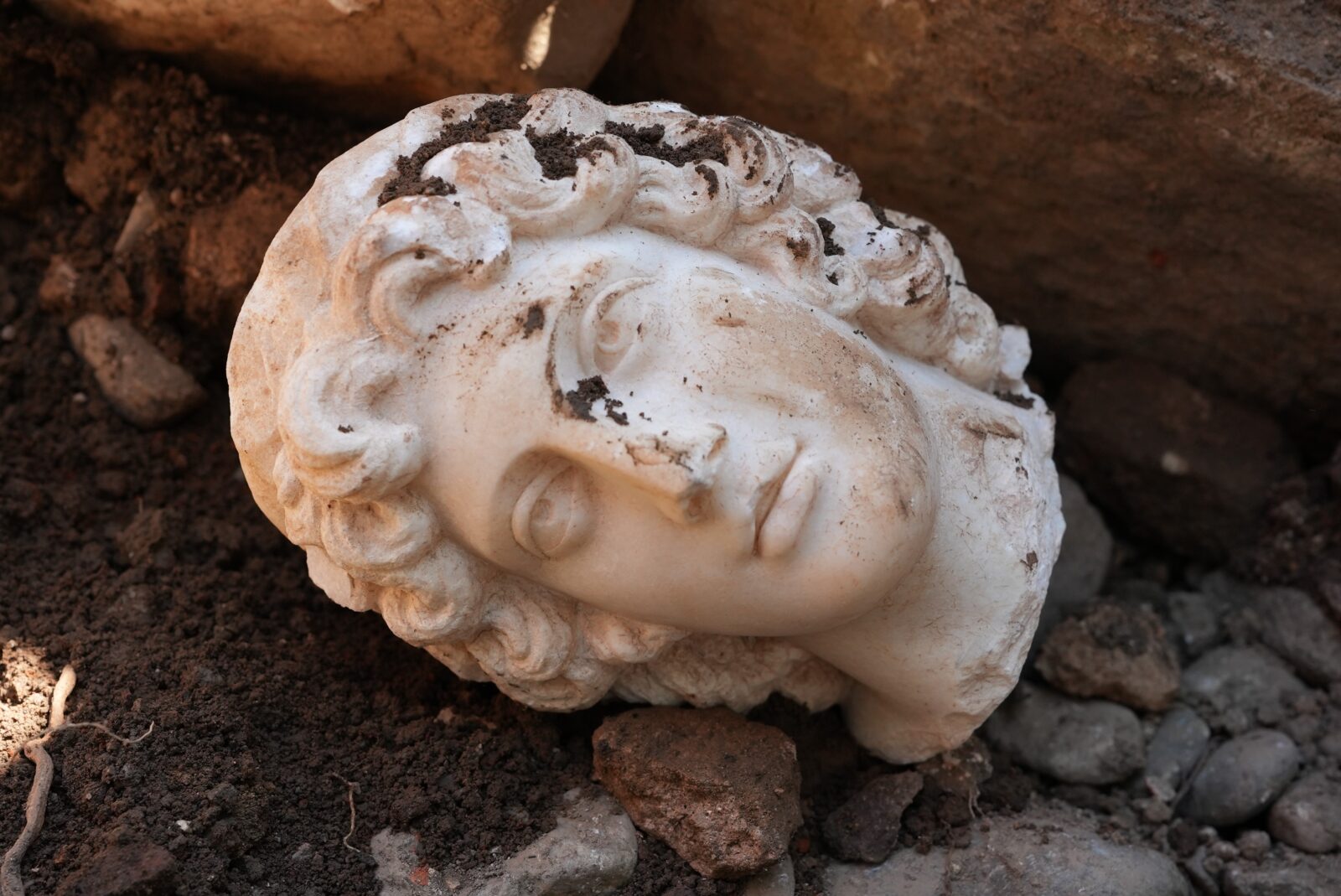
Arkeoloji uzmanlarının belirlediği Türkiye’nin öne çıkan 10 arkeolojik keşfi listesinde Düzce’de kazı çalışmalarında ortaya çıkan Büyük İskender Portresi’nin beşinci sırada yer aldığı bildirildi.
Alexander the Great portrait bust among top 5 discoveries
One of the most remarkable finds was a marble portrait head of Alexander the Great, which was listed as one of the top 5 archaeological discoveries in Türkiye in 2023.
The portrait, dating back to the 2nd century A.D., was found near the mosaic structure, featuring lifelike details such as deep-set eyes, curly hair, and a parted hairstyle resembling a lion’s mane.
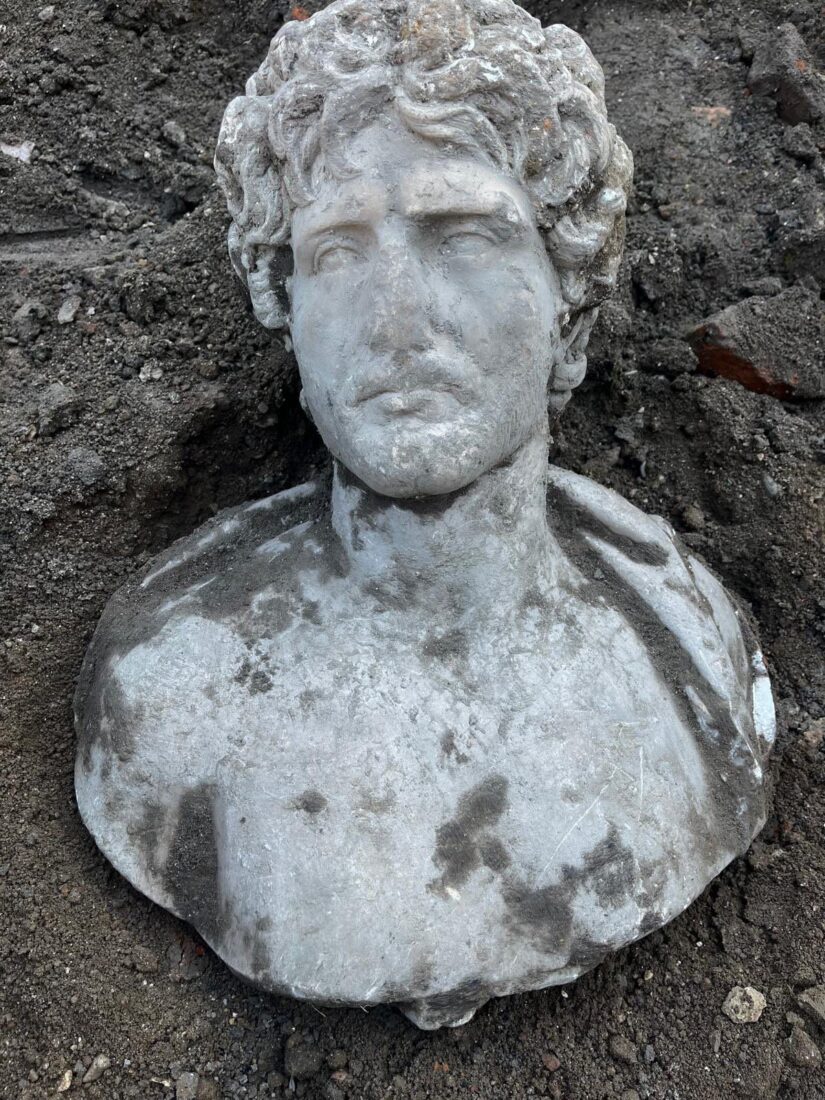
Düzce’nin Konuralp bölgesinde yer alan Prusiad Ad Hypium Antik Tiyatrosu kazılarında portre başına rastlandı. Oldukça iyi korunmuş durumda olan eşsiz eserin, tiyatronun sahne binasını yaptıran M. lulius Proklos’a ait olabileceği tahmin ediliyor.
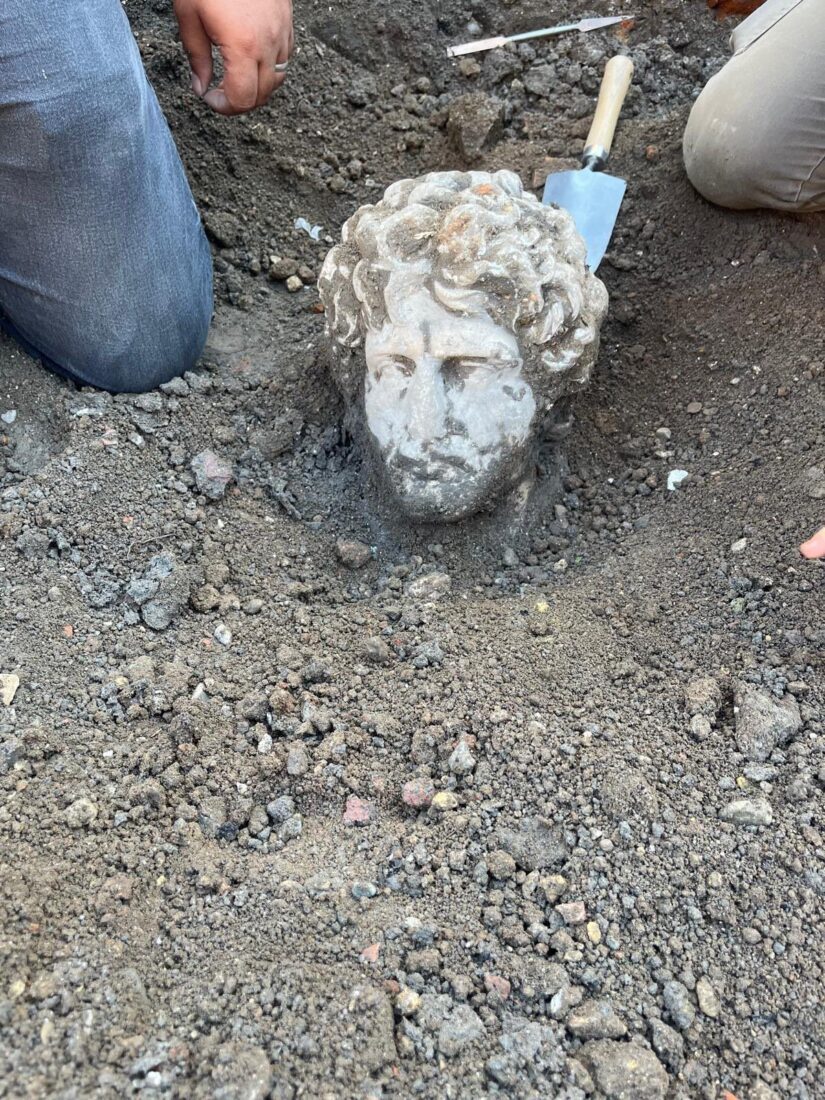
Düzce’nin Konuralp bölgesinde yer alan Prusiad Ad Hypium Antik Tiyatrosu kazılarında portre başına rastlandı. Oldukça iyi korunmuş durumda olan eşsiz eserin, tiyatronun sahne binasını yaptıran M. lulius Proklos’a ait olabileceği tahmin ediliyor.
Intriguing bust of theater sponsor found in 2024
A recent find in 2024 brought to light a well-preserved bust believed to depict M. Iulius Proklos, a sponsor who commissioned the theater’s stage building. Discovered near the western entrance, the bust, 56 cm high and 50 cm wide, features a detailed depiction of curly, twisted locks and facial hair, reflecting the intricate style of the Antonine period.
Archaeologists believe the bust is a unique piece, representing the high-quality craftsmanship of the era.
Efforts to preserve and restore the artifacts have been carried out by restorers from the Istanbul Archaeology Museums. The discovery of these statues, along with the Dionysian cult room and other structures, continues to shed light on the city’s historical and cultural significance.
With ongoing excavations supported by the Directorate of Cultural Heritage and Museums and Duzce Municipality, Prusias ad Hypium promises to reveal more of its ancient secrets, offering a glimpse into the rich cultural heritage of Türkiye.
